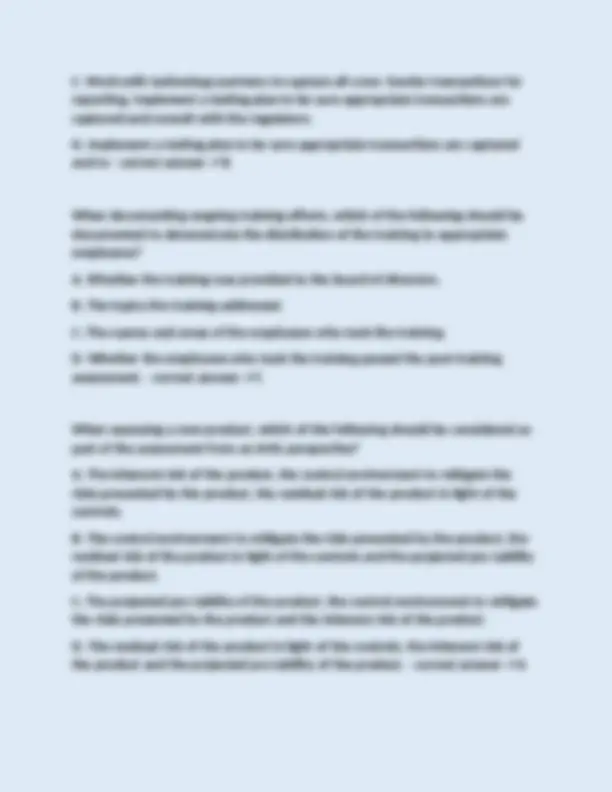






























































































Study with the several resources on Docsity

Earn points by helping other students or get them with a premium plan


Prepare for your exams
Study with the several resources on Docsity

Earn points to download
Earn points by helping other students or get them with a premium plan
Community
Ask the community for help and clear up your study doubts
Discover the best universities in your country according to Docsity users
Free resources
Download our free guides on studying techniques, anxiety management strategies, and thesis advice from Docsity tutors
A set of practice questions and answers related to the anti-money laundering (aml) certification exam. It covers various aspects of aml, including the usa patriot act, money laundering stages, aml program elements, risk assessment, and common money laundering methods. The questions are multiple-choice and provide insights into the key concepts and principles of aml.
Typology: Exams
1 / 128

This page cannot be seen from the preview
Don't miss anything!





























































































⪛⪴⪴⪷⪱⪘⪞⪴⪸ εΘΙΙμλΜιΙππππ ιΤΜΜτλμτΧ ⪛⪴⪴⪷⪱⪘⪞⪴⪸εΘΙΙμλΜιΙππππ ιΤΜΜτλμτΧ ⪛⪴⪴⪷⪱⪘⪞⪴⪸ εΘΙΙμλΜιΙππππ ιΤΜΜτλμτΧ ⪛⪴⪴⪷⪱⪘⪞⪴⪸εΘΙΙμλΜιΙππππ ιΤΜΜτλμτΧ ⪛⪴⪴⪷⪱⪘⪞⪴⪸ εΘΙΙμλΜιΙππππ ιΤΜΜτλμτΧ ⪛⪴⪴⪷⪱⪘⪞⪴⪸εΘΙΙμλΜιΙππππ ιΤΜΜτλμτΧ